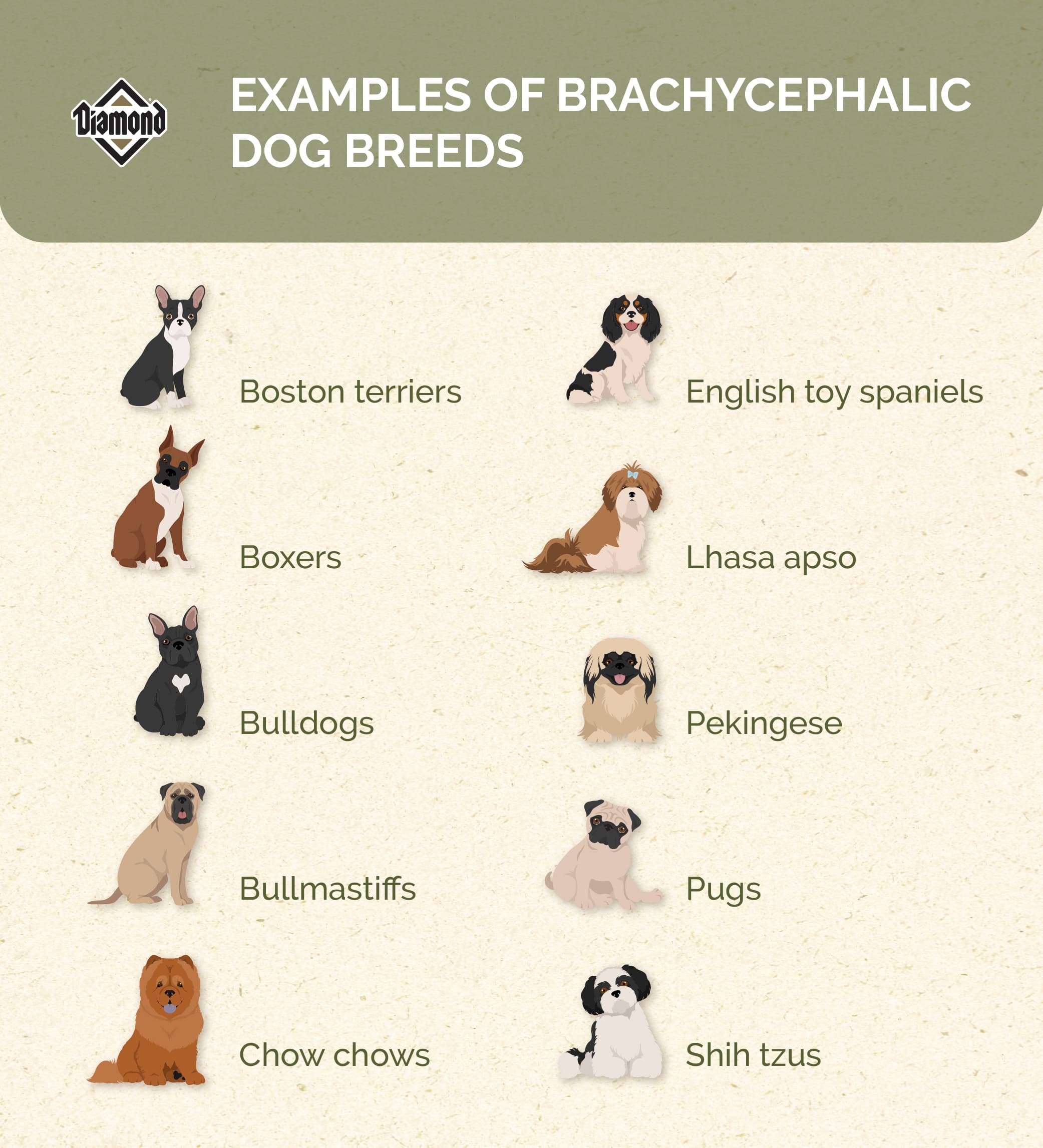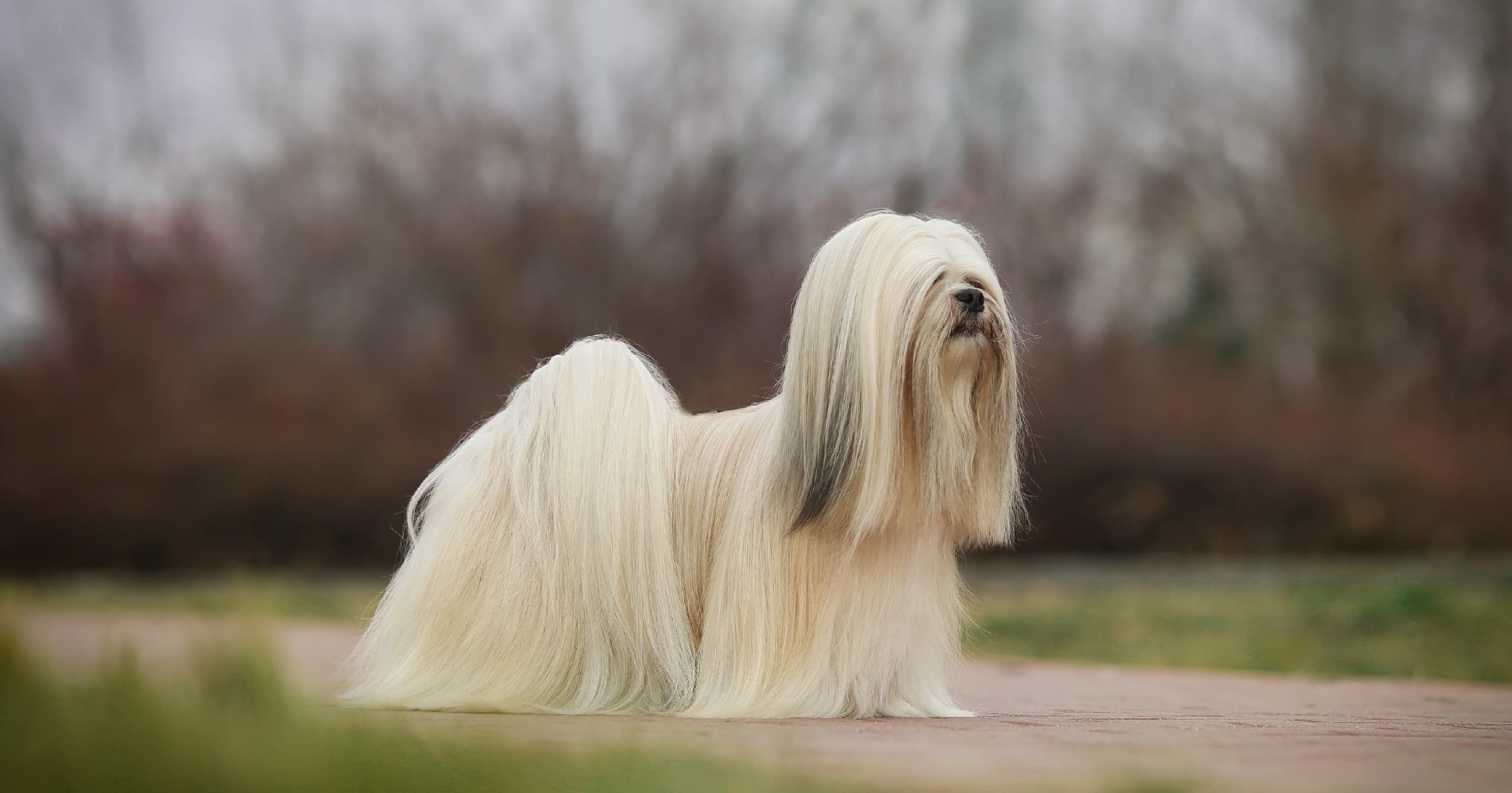All dogs need exercise to keep them healthy and active, but for smooshed-faced dogs like pugs, bulldogs and Boston terriers (brachycephalic breeds), certain activities can be hazardous to their health. Flat-faced dogs often have breathing issues which can limit some of the activities they should be doing. Learn more about why brachycephalic dogs have breathing and airway problems, what activities they should avoid and some alternate ways to keep them fit.
Short Head and Short of Breath
“Brachy” means short and “cephalic” means head, which is why brachycephalic is the name given to dogs that have short, flat muzzles (i.e., smooshed-in faces). Many of these breeds are popular, but if your dog is a brachycephalic breed or you’re thinking of adopting one, you should be aware that some flat-faced dogs could have breathing issues (like brachycephalic airway syndrome) — and sometimes that means surgery.
All brachycephalic dogs have at least a mild version of brachycephalic airway syndrome. According to Veronica Higgs, DVM, in an article for PetMD, the shortened skull, facial and nasal bones of brachycephalic dogs causes anatomical changes to their throat and airway that affects their breathing and airflow (causing brachycephalic airway syndrome). Dr. Higgs explains that this genetic condition involves the three functional abnormalities listed below.
- Stenotic nares — narrow nostril openings which restrict airflow and breathing. Nostrils can be surgically widened to help increase airflow.
- Elongated soft palate — the soft palate tissue is often too long for the length of the mouth and the excess tissue flaps into the throat causing snoring and blocking airflow. A soft palate resection can be performed to surgically shorten the tissue.
- Everted laryngeal saccules — Increased effort to breathe can cause sacs of tissue to turn inside out and block the airway. The everted laryngeal saccules can be surgically removed.
Other abnormalities associated with flat-faced dogs include hypoplastic trachea (a smaller than normal windpipe) and laryngeal collapse, where the voice box becomes damaged by chronic stress and collapses, blocking the airway.

Flat Faces Cause Snoring and Underbites
Does your dog have to sleep in their own room because of how loud their snoring is? The way air moves in and out of your dog’s nose and nasal passages is related to their shape. Brachycephalic dogs often have smaller nostrils that can cause a partial airway obstruction. Having an elongated soft palate can also partially block the opening of the trachea (windpipe). Both of these issues can cause snoring and a noisy sleeper.
Due to their short head and jaws, brachycephalic dogs are likely to have crowded teeth and bite abnormalities. Their shortened jaws still need to fit the same number of teeth into a smaller space, and this can lead to tooth rotation and crowding. Bite abnormalities, like the characteristic bulldog underbite, can result in tooth and gum tissue damage.
Exercises for Flat-Faced Dogs to Avoid
All of those breathing and airway issues mean there are certain exercises and activities that brachycephalic dogs should avoid. If you’re headed to the beach, the lake or the pool, it’s best to keep your flat-faced doggie out of the water. Their hefty chests, short legs and tendency for breathing challenges mean they’re not really built for swimming. If keeping them out of the water is unavoidable, it’s a good idea to put them in a well-fitting life jacket with a handle for quick recovery (if needed). You should still keep an eye on them though, as they could have breathing issues if they’re overexerting themselves or overheating while swimming.
Similarly, if your favorite exercise is to go for a morning jog or run a 5K, it’s best to leave your brachycephalic dog at home. They’re compromised breathing means they won’t be able to keep pace with you, and the strenuous exercise could cause health issues for them.
Keep ’Em Cool
Dogs use their respiratory system to keep themselves cool — all that panting isn’t just to tell you they’re hot; it’s actually cooling them down internally. This means brachycephalic dogs are at an increased risk of heatstroke (especially if they’re overweight) because it’s more difficult for them to pant and get their body cooler.
Make sure your dog has easy access to fresh cool, water and keep them in air conditioning (if possible) on hot and humid days. If they’re panting a lot more than they usually do, it’s time to stop what you’re doing and get them in the shade or air conditioning, or find another way to cool them down.
Exercise Options for Brachycephalic Dogs
Your dog may be limited in where they can exercise and the type of activities they can do, but that doesn’t mean they should become a couch canine and not exercise at all. Regular exercise is important to keep joints and muscles healthy and keep your dog within an optimal weight range. A healthy weight is especially important for brachycephalic dogs as obesity can make breathing more challenging for them.
Exercise can also work off any excess energy your dog has that could otherwise be channeled into destructive behaviors — especially when you’re out of the house and they have a chance to get up to mischief.
Before starting any new exercise, make sure your veterinarian agrees that it is safe for your dog to exercise or do certain activities. Once you’ve got the go-ahead, you can try some of these activities — they can be a good fit for your short-nosed dog to stay fit.
- Doga (dog yoga) — You can look for a yoga class for you and your dog or just do some stretching at home. Stretching helps your dog relax and maintain the range of motion in their joints.
- Obstacle course — To keep your dog out of the heat but still get their heart rate up, you can create an indoor obstacle course. You could use cardboard boxes, hoops, furniture, blankets or other household objects to create ramps, tunnels, obstacles and poles for your dog to run through and around.
- Walkies — Going on a walk with your dog is good exercise for both of you. Just make sure to avoid walking when it’s hot or humid, and use a harness instead of a collar that could restrict their breathing further.
Can Brachycephalic Dogs Fly?
You wouldn’t want your canine BFF to miss out on vacationing with you, but air travel could put a kink in those plans. Many airlines don’t allow brachycephalic dogs in their cargo holds, so before you book your tickets, check if the airline has a policy about traveling with brachycephalic dog breeds. Traveling by car may be a less stressful option for your flat-faced dog and, in some case, your only option if you want them to vacation with you.
If you have a brachycephalic dog, you’re probably used to their snores and squeaks. But if these noises start to sound different, or your dog is finding it harder to breathe, you should consult your veterinarian. Squishy-faced dogs may need some extra care, but there are still plenty of activities you can enjoy doing together!
RELATED POST: How Much Exercise Does Your Pet Need?







